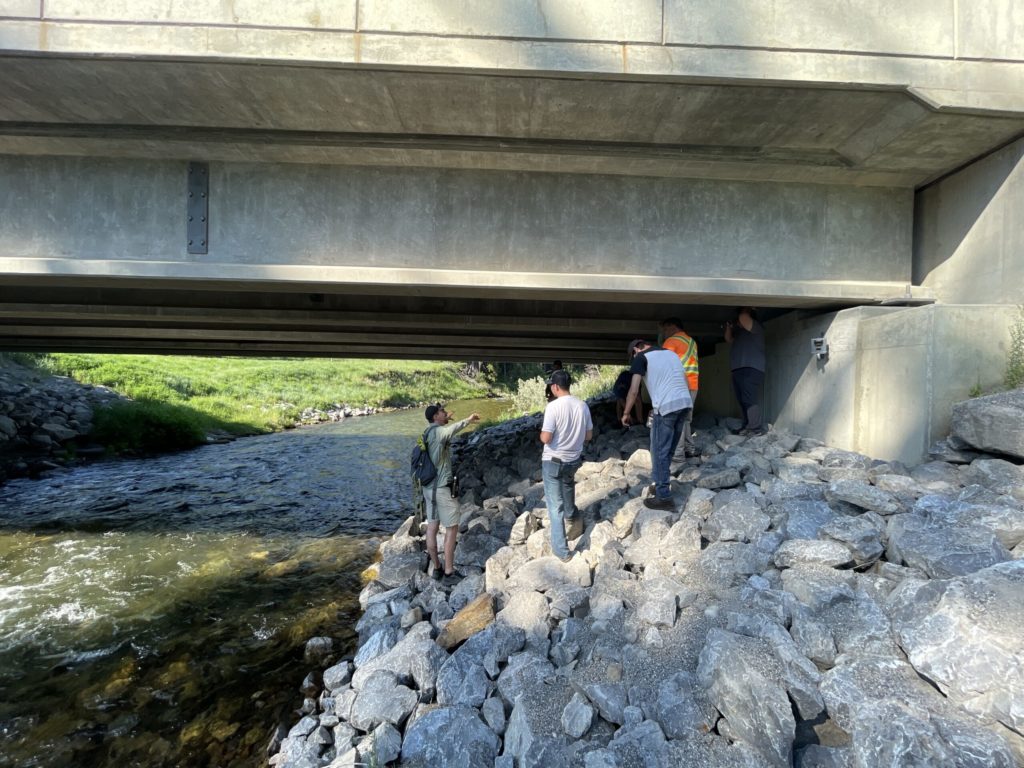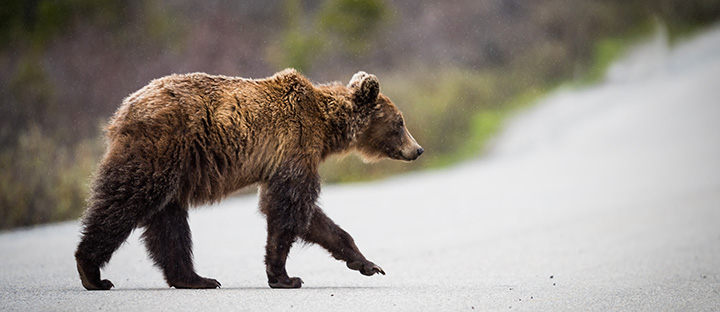Government of Canada contributes more than $1.9M to support ecological connectivity in southeastern British Columbia and southwestern Alberta, improving wildlife movement across Highway 3
Ecological corridors are key in connecting protected and conserved areas, which will help curb biodiversity loss and help species to adapt to climate change. By properly linking protected and conserved areas, natural processes can take place and species can move, interact, and find habitat across vast landscapes and coastlines.
Today, the Honourable Steven Guilbeault, Minister of Environment and Climate Change and Minister responsible for Parks Canada, together with president and chief scientist Dr. Jodi Hilty from Yellowstone to Yukon Conservation Initiative, on behalf of the organization and its partners, announced a contribution of more than $1.9 million to improve ecological connectivity in southeastern British Columbia and southwestern Alberta.
“By supporting projects like the Highway 3 Wildlife Mitigation initiative, Parks Canada, through its National Program for Ecological Corridors, is directly investing in ecological connectivity and taking action against the dual challenges of climate change and biodiversity loss,” says the Honourable Steven Guilbeault, Minister of Environment and Climate Change and Minister responsible for Parks Canada. “The Government of Canada recognizes that strong partnerships are crucial in responding to these challenges. I want to thank the Yellowstone to Yukon Conservation Initiative and its partners for their dedication and collaboration to achieve the shared goal of ensuring that species can thrive and move freely across the land and water in western Canada.”
This collaboration between Parks Canada and Y2Y supports the Highway 3 Wildlife Mitigation Initiative by enabling infrastructure projects, communications, research, and Indigenous engagement activities. The funding from Parks Canada’s National Program for Ecological Corridors will minimize the impact of Highway 3 on wildlife in the area, particularly by decreasing collisions and linking habitat currently fragmented by the highway.
This funding will also help support Reconnecting the Rockies, a project the Province of British Columbia has prioritized, and is already underway which includes a series of wildlife crossings, fencing, and signage along this busy road to improve connectivity at a critical point along the 3,200-kilometre-long Yellowstone to Yukon wildlife corridor.

This series of crossings will help many species best supported at the large transboundary landscape scale, especially the grizzly bear and wolverine. The location of this project plays a key role in connecting wildlife populations east-west over the Rocky Mountains and north-south across the Canada-U.S. border and between the large, protected areas of Waterton-Glacier International Peace Park and Banff National Park. This corridor connects the Cabinet-Purcell Mountain and Crown of the Continent ecosystems.
“This project keeps both people and wildlife safe along the Highway 3 corridor and is continentally significant as it helps restore and enable wildlife to move between Canada and the United States. The Yellowstone to Yukon Conservation Initiative is delighted to work with key partners, like Parks Canada, to help maintain connectivity across the Yellowstone to Yukon region,” says Dr. Jodi Hilty, president and chief scientist, Yellowstone to Yukon Conservation Initiative.
Parks Canada and those engaging on the ground are committed to protecting biodiversity and helping to support species at risk. A team of experts comprised of individuals from Y2Y, British Columba Ministry of Forests, British Columbia Ministry of Transportation and Infrastructure, Teck Resources, Ktunaxa First Nation, Biodiversity Pathways, Miistakis Institute, Wildsight, Stantec, community groups and more, is working to advance the shared goal for landscape level connectivity through this project.
“Wildlife highway collisions are a danger to people and animals. By building more safe ways for wildlife to cross highways, we are making our infrastructure safer for drivers on Highway 3 and helping to restore connected habitat,” says Rob Fleming, Minister of Transportation and Infrastructure, British Columbia.
“The Ktunaxa Nation is committed to reducing impacts to wildlife and improving ecological connectivity throughout ʔamak̓ʔis Ktunaxa, and support the work of projects such as the Highway 3 Wildlife Mitigation Initiative to provide protected passage along this key ecological corridor. We are pleased to work alongside our partners to lessen wildlife collisions to provide a safer environment for us all,” says Jaime Vienneau, Operational Director, Ktunaxa Nation Council Lands and Resources Sector.
“Teck is proud to be joining the Ktunaxa Nation, governments, and our other partners to protect people and wildlife. The Reconnecting the Rockies Project aligns with our goal of becoming Nature Positive by 2030 and will reduce wildlife collisions in the Elk Valley and create a safe crossing for many species including bighorn sheep, elk, grizzly bear, and wolverine,” says Jonathan Price, CEO, Teck Resources Limited.


